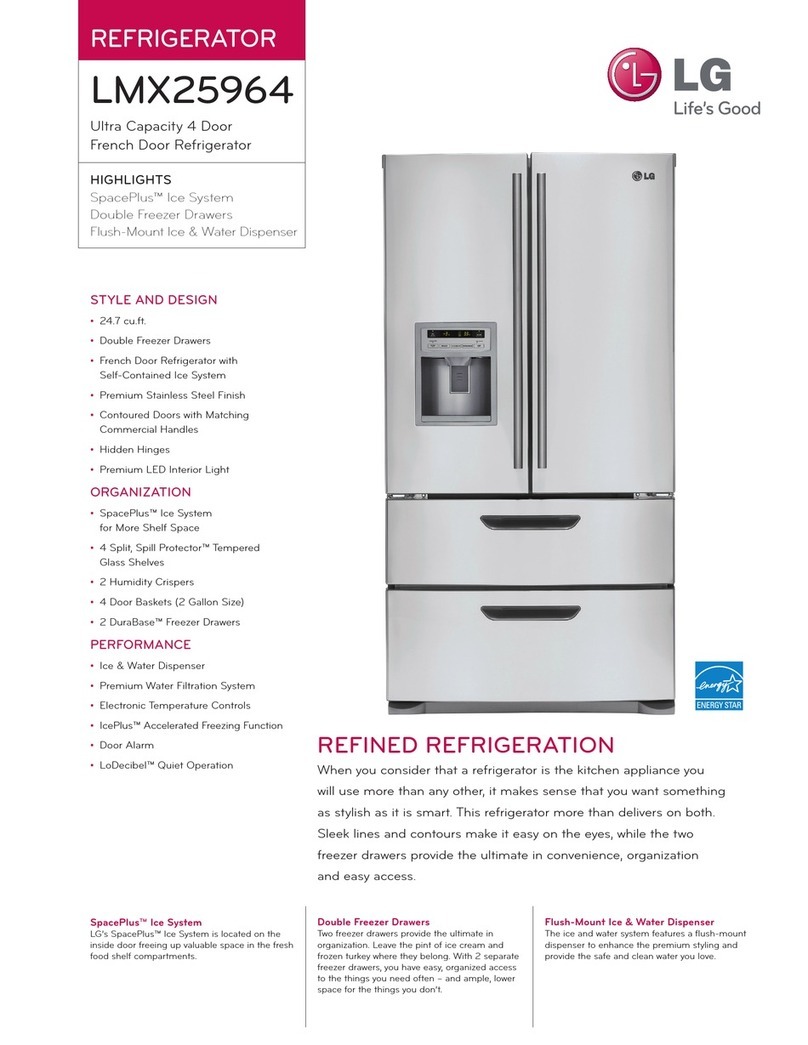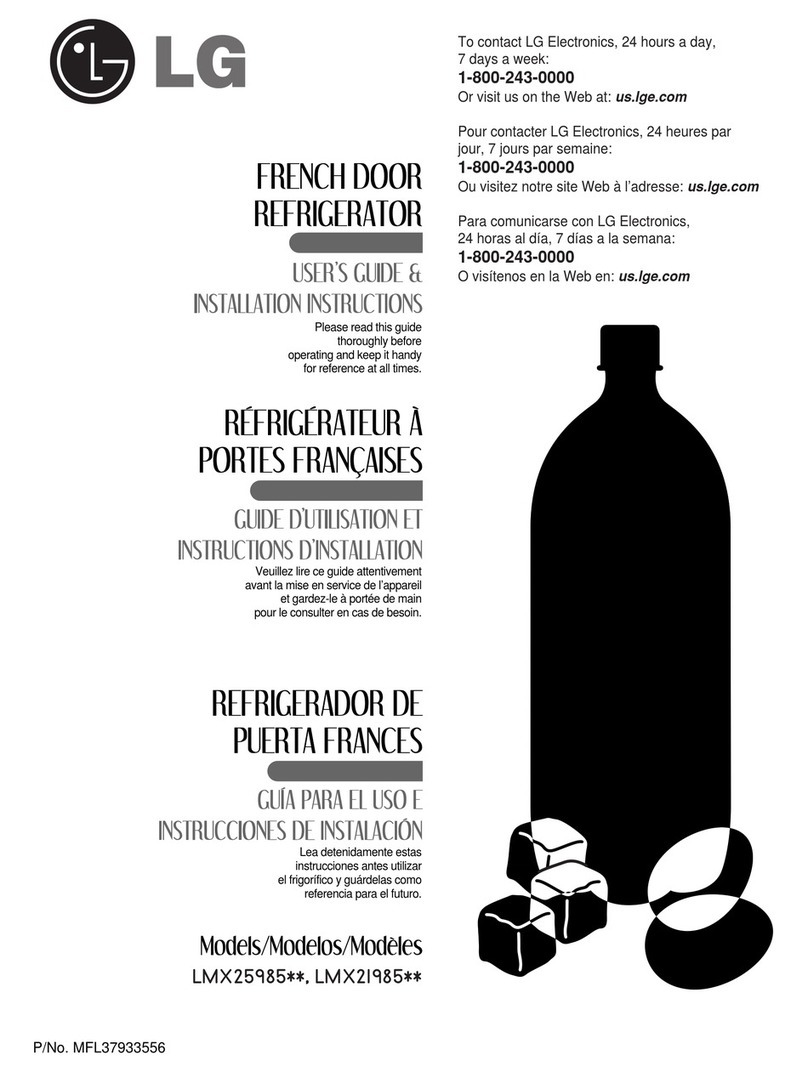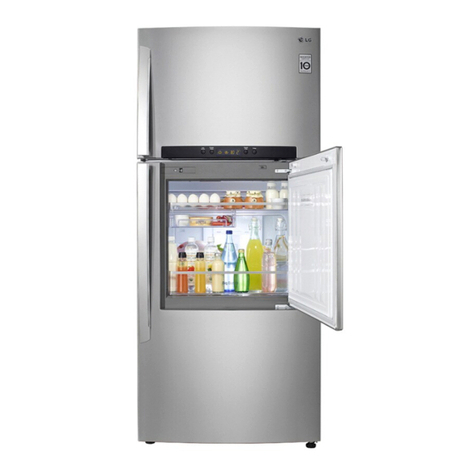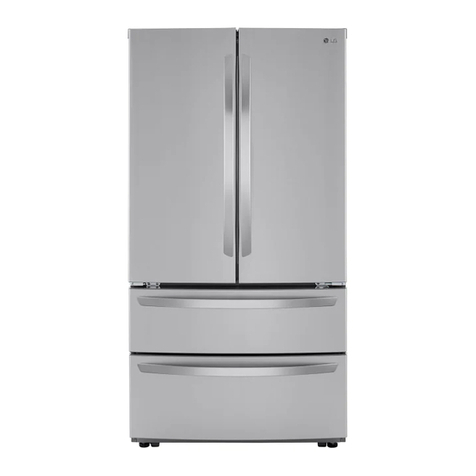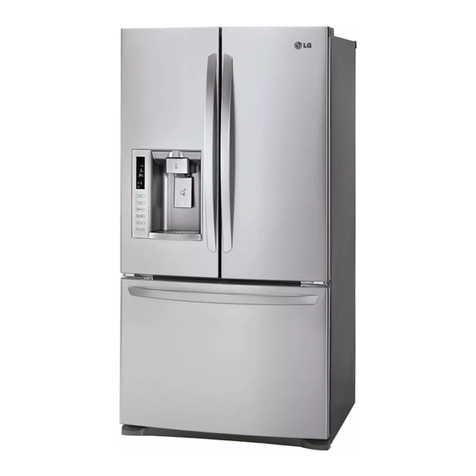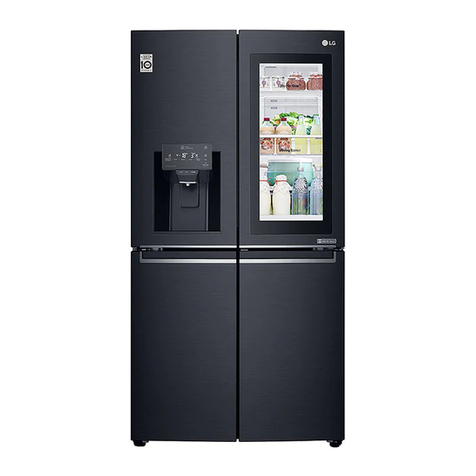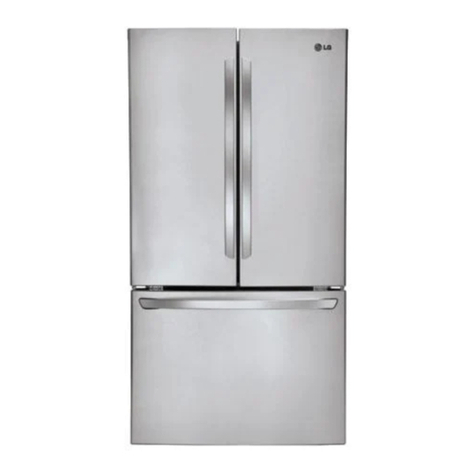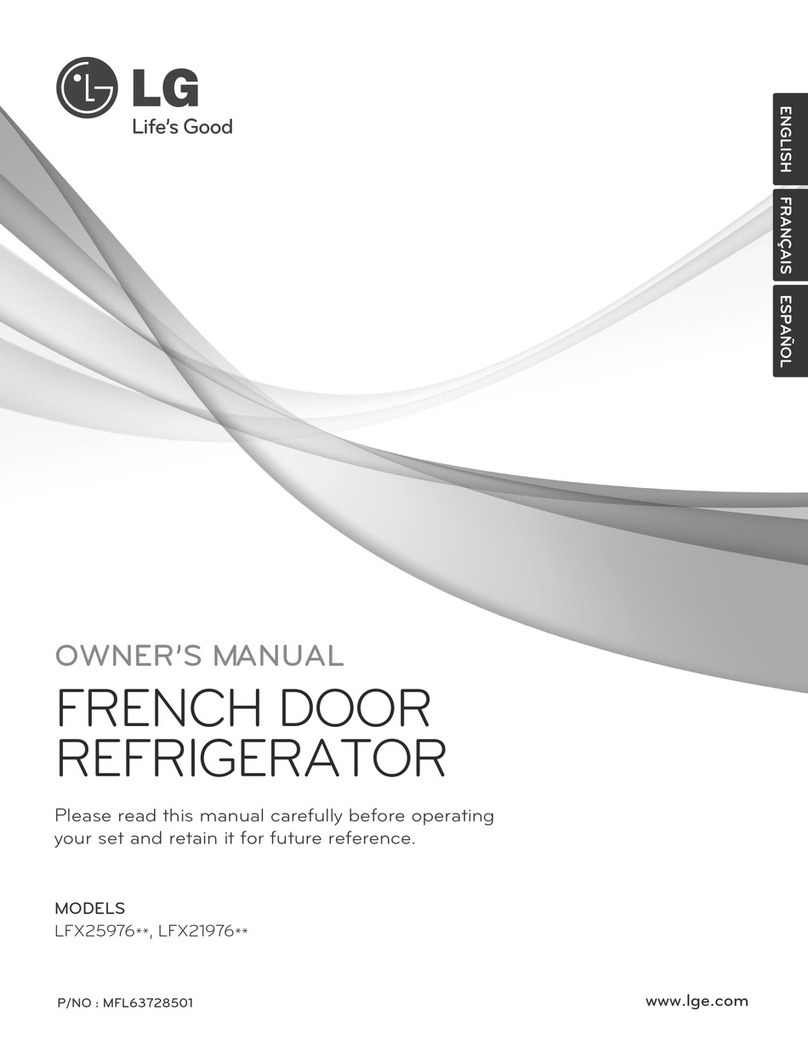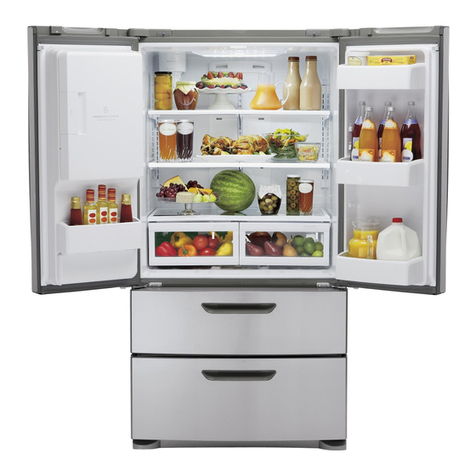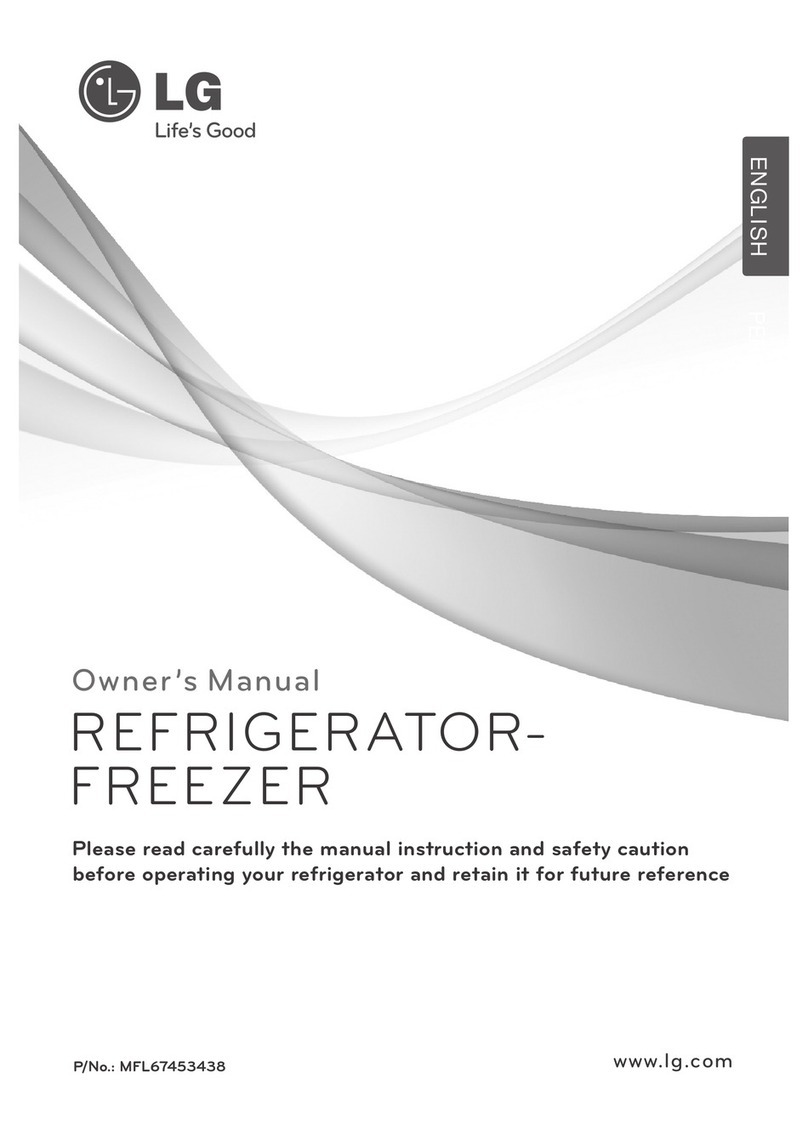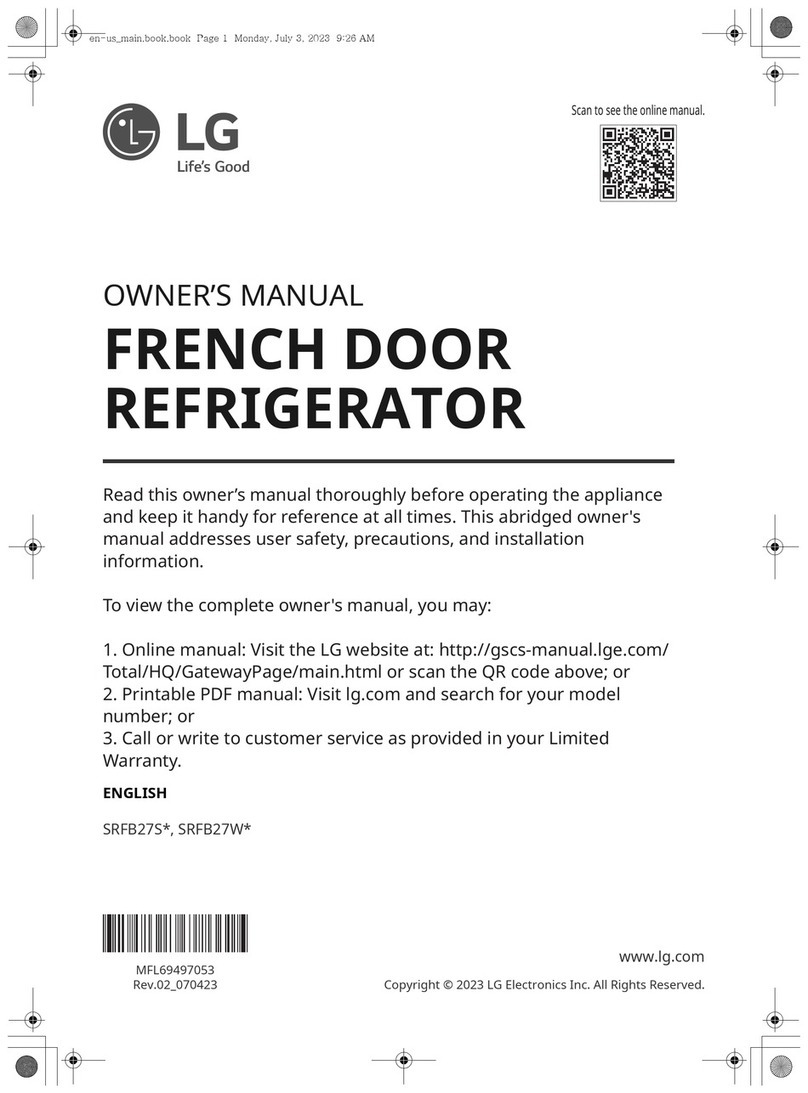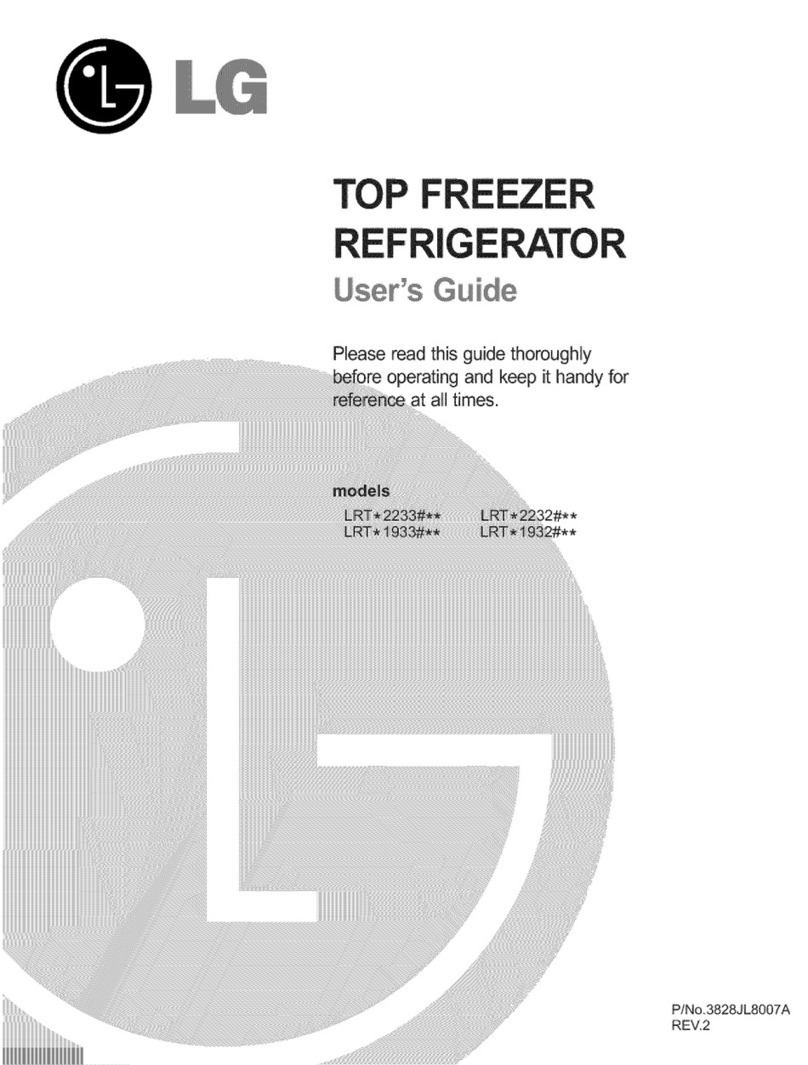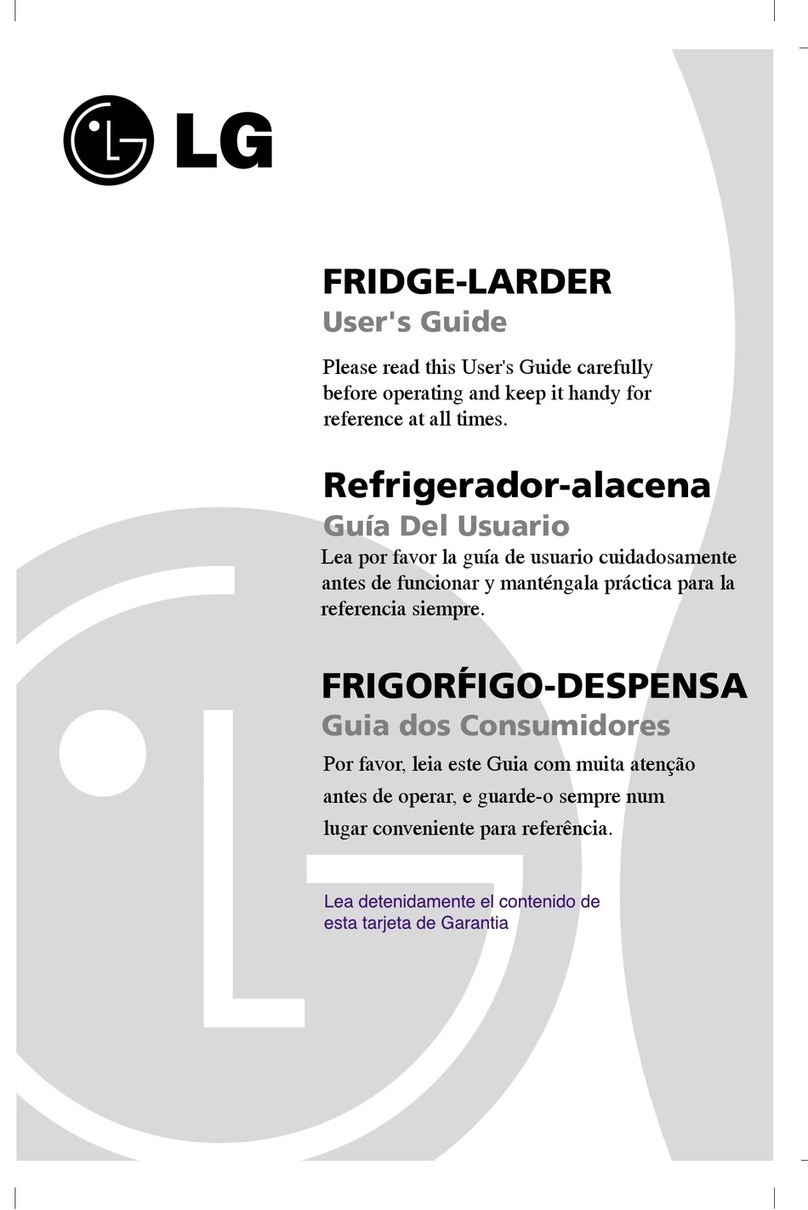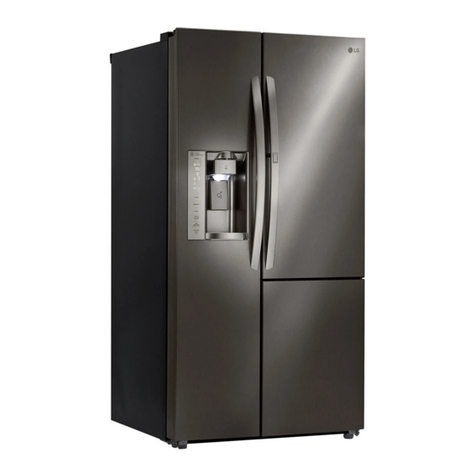Type 2 When using any electrical device (such as a power drill)
Adjusting fools: 5/16" (8 ram) wrench and 3/4" (19 ram) during installation, be sure the device is double insulated
wrench, or grounded in a manner to prevent the hazard of electric
shock, or is battery-powered. All installations MUST be
in accordance with local plumbing code requirements.
NOTE: Wear eye protection.
Using a 3/4" (19 ram) wrench, turn the keeper nut
clockwise to loosen the keeper nut.
Using a 5/16" (S ram) wrench, turn the adjustment hinge
pin clockwise or counterclockwise to level the refrigerator
and freezer door.
Ifareverse osmosis wafer filtration system is
connected to your cold water supply, the water line
installation is not warranted by the refrigerator or ice
maker manufacturer or seller. Follow next instruction
carefully to minimize the risk of expensive water
damage.
Ifareverse osmosis wafer filtration system is
connected to your cold water supply, the water
pressure to the reverse osmosis system needs to be a
minimum of 40 to 60 PSI (2,8 kgof/cm zN 4,2 kgof/
cm 2 ,less than 2N3 sec to fill a cup of 7 oz. capacity).
After setting level door, turn the keeper nut
counterclockwise to tighten.
CAUTION: Do not over tight the door adjustment
screw. The hinge pin can be pulled
out. (Adjustable range of height is a
maximum of 1/2" (1,27 cm)).
AFTER LEVELING THE DOOR HEIGHT
Confirm all legs are in contact with the floor.
CONNECTING THE WATER LINE
NOTE: Water line installation is needed when the
Automatic Ice maker and/or Water Dispenser
features are available on your product.
BEFORE YOU BEGIN
This water line installationis not warranted by the
refrigerator or ice maker manufacturer or seller.
Follow these instructions carefully to minimize the risk of
expensive water damage.
Water hammer (water banging in the pipes) in house
plumbing can cause damage to refrigerator parts
and lead to water leakage or flooding. Call a qualified
plumber to correct water hammer before installing the
water supply line to the refrigerator.
To prevent burns and product damage, do not hook up
the water line to the hot water line.
If you use your refrigerator before connecting the water
line, make sure the ice maker power switch is in the OFF
(0) position.
Do not install the ice maker tubing in areas where
temperatures fall below freezing.
If the water pressure from the reverse osmosis system is
less than 21 PSI (1,5 kgof/cm z, more than 4 sec to fill a
cup of 7 oz. capacity):
• Check to see whether the sediment filter in the reverse
osmosis system is blocked. Replace the filter if necessary.
• Allow the storage tank on the reverse osmosis system
to refill after heavy usage.
• If the issue about water pressure from reverse osmosis
remains, call a licensed, qualified plumber.
WHAT YOU WILL NEED
•Copper Tubing, 1/4" (6,35 mm) outer JJ
diameter to connect the refrigerator to_
the water supply. Be sure both ends of
the tubing are cut square.
To determine how much tubing you need, measure
the distance from the water valve on the back of the
refrigerator to the water supply pipe. Then add S feet
(2,4 m). Be sure there is sufficient extra tubing (about
S feet [2,4 m] coiled into 3 turns of about 10" [25 cm]
diameter) to allow the refrigerator to move out from the
wall after installation.
Be sure that the kit you select allows at least S feet
(2,4 m) as described above.
• A cold water supply. The water pressure MUST be
between 20 and 120 PSI (1,4 bar and S,2 bar) on
models without a water filter and between 40 and 120
PSI (2,S bar and S,2 bar) on models with a water filter.
A_
• Power drill, i_____
LSj
• 1/2" (12,7 ram) or Adjustable Wrench.
•Flat head and Phillips screwdrivers.
